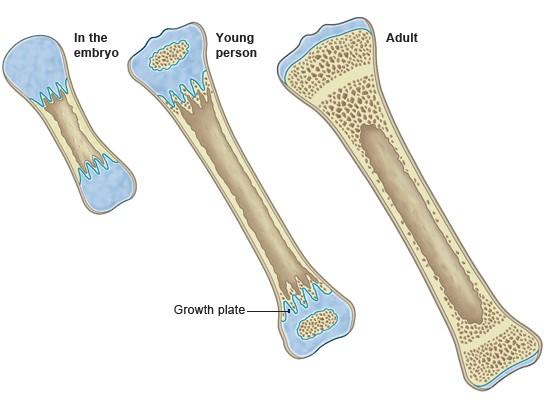Human Bone Growth is a Thermodynamic Process: New Study Reveals

Image for representational use only.Image Courtesy : namesake-expert.blogspot.com.
The process of how exactly bones grow in the body has not been understood well till now. But a recent study done by Martin Anderson and his colleagues at Chalmers University of Technology, Sweden, has revealed that this process is more influenced by thermodynamic factors than the biological ones. In fact, the process of bone growth, according to the study, is independent of other biological systems in the body. This finding has the potential of being used for the development of treatments for bone-related diseases; also, this could pave the way for developing more advanced prosthetic implants.
In our bones, new growth takes place when spherical and disordered blobs of calcium phosphate—that are secreted by specialised cells—occupy the spaces in between strings of collagen. Collagen is the most abundant protein in mammals and the main structural protein in various connective tissues. Collagen is made up of three chains wrapped up to give a triple helical structure. In between the collagen chains, the amorphous blobs get transformed to an orderly and crystalline structure known as the bone apatite that provides the bones its unique mechanical properties. But, how exactly this process takes place has not been clearly understood.
Approach of the Study
Anderson’s team started with the goal to create a material by applying 3D printed materials that could correctly mimic the mechanical properties of bone. In the 3D printing technique, a three-dimensional solid object is manufactured from a digital file. Anderson’s team also aimed to develop a material that could replace the metal, plastic or other materials that are currently used in the prosthetic implants, thus, providing the patients greater mobility. Although, Anderson’s team started with this aim, they soon realised that their method could also be useful in understanding the process of bone formation at the molecular level with an unprecedented level of details.
From Disordered Spheres to Orderly Structure of Bones
The team, with the use of TEM (transmission electron microscopy) analysed their 3D printing process at the atomic level. This enabled them to observe for the first time how the bone apatite could emerge out of disordered spheres of calcium phosphate.
They found that as soon as the calcium phosphate spheres reach the spaces in between collagen chains, nanometre-sized clusters of molecules form the spheres migrate to the space which is the lowest energy location on the bone’s growth front. In this process of occupying the lowest-energy space, the orderly structure of bone apatite forms.
An analysis of their results showed that the driving force of the process is the presence of humidity in the bone-forming regions. This suggests that the bone forming process is the thermodynamic response of the calcium phosphate to its surroundings. This also suggests that the process is independent of other biological systems of the body.
The team believes that their findings could lead to development of better treatment for the patients suffering from osteoporosis where the bones decay at a faster rate than new apatite can crystallise. They also hope that their discoveries would help in better evaluation of the current and newly proposed osteoporosis treatments.
Get the latest reports & analysis with people's perspective on Protests, movements & deep analytical videos, discussions of the current affairs in your Telegram app. Subscribe to NewsClick's Telegram channel & get Real-Time updates on stories, as they get published on our website.














